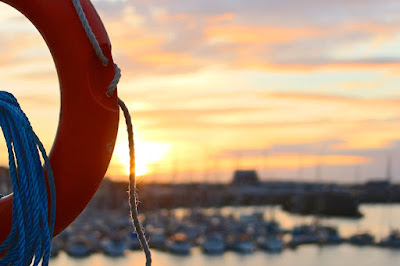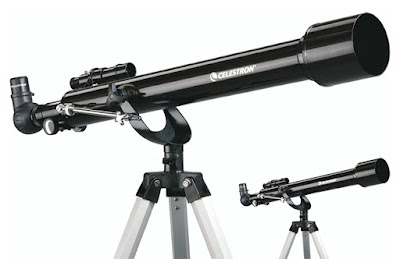A telescope is a remarkable device that has the ability to make distant objects appear to be much closer. It essentially extends the capacity of the human eye to observe and measure objects that are distant from us. Telescopes come in all shapes and sizes, from the small cheap plastic tube telescopes that can be purchased at the local store, to the gigantic ones like the
Hubble Space Telescope.
There are also amateur telescopes fit somewhere between these two extremes which can still do remarkable things. For instance, with a small telescope of 15 cm, one can still read the fine print on a document placed a distance of over thirty meters away.
Telescopes are essentially of two basic types;
The refractor telescopes, which use glass lenses and the reflecting telescopes which use mirrors instead of lenses.
Both types of telescopes perform exactly the same function, but they operate in completely different ways. The telescope is an instrument that works according to the optical principles of Physics, by taking the light that enters through the lens and focusing it at another point where it is viewed by the human eye.
How It Works
The conventional optical telescopes basically consist of a lens and an eyepiece. These parts are largely responsible for the functionality of the microscope.
In a nutshell, the objective lens (in refractor telescopes) or primary mirror (in reflector telescopes), collects lots of light from a distant object and focuses the light, or image, to a point. The eyepiece takes the light of the objective lens or primary mirror and "spreads" it to fill a large part of the retina in the human eye.
This is the same principle that a magnifying glass (lens) uses. The basic idea is to get the incoming light from the distant object to form a bright image inside the telescope, and then magnify the bright image so that it takes up much space on the retina.
If you are looking for help deciding which telescope is right for you, make sure to
read telescope reviews on the latest products that are available on the market today.
Refractor Telescopes
Refractor telescopes primarily consist of the following parts:
A long tube made of metal, plastic or wood
A combination of glass lenses on the front (lens) and
A second combination glass lens (eyepiece)
The tube holds the lenses at an appropriate distance from one another. The tube also helps to keep out dust, moisture and light that may interfere with the formation of a clear image.
The refracting telescope works based on the principle of refraction and light passes through a lens to form the image. This instrument has an objective lens that captures light from objects and forms the image. The objective lens gathers light, and bends or refracts the light to form a focus near the back of the tube.
The eyepiece then transmits the image to the human eye, and magnifies the image. The second lens, called the eyepiece, works like a magnifying glass, increasing the size of the image formed by the objective lens. The human eye has a shorter focal length than the objective lens of the microscope.
Reflector Telescopes
Sir Isaac Newton designed the first reflector telescope in order to solve the problematic issue of chromatic aberration which was a great limitation of refractor telescopes. Chromatic aberration was a serious defect in all refractor telescopes before the invention of the achromatic lens.
Thus, a traditional two-mirror telescope is known as a Newtonian reflector telescope. It operates based on the principle of reflection of light which basically is that when light hits a mirror at any angle, is reflected at the same angle. It consists of a primary and secondary mirror as well as the eye piece. Depending on the type of reflector telescope, the two mirrors employed in the telescope can be any given combination of flat, convex or concave mirrors. The secondary mirror when flat, is placed in a 45 degree angle.
Instead of using a lens to gather light, the primary mirrors collects it and reflect the image at the focus. The parabolic primary mirror is located on the rear of the tube while the secondary mirror is placed in the line of eyesight.
As the mirror reflects the light back into the tube, it concentrates the light onto a single point. As the light strikes the primary mirror, it is reflected onto the secondary mirror. Then, it is reflected from the secondary mirror to the eyepiece, which magnifies the image and sends it to the eye.
Learning how to use a telescope is such an amazing process, the inventors of the telescope have paved the way for a much brighter future for all future astronomers and people of the world in the name of science. The video below will give you a more in-depth field on how a telescope works when using it.


